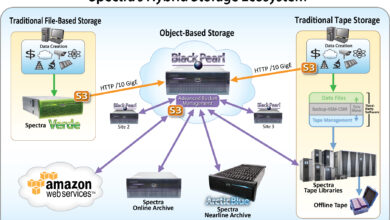Unleashing the Power of Google Cloud Compute Engine

Contents
Introduction to Google Cloud Compute Engine

Welcome to the world of google cloud compute engine, a game-changing solution designed to propel your business into the future. In this section, we’ll delve into the essence of Google Cloud Compute Engine, exploring its definition, and outlining the remarkable benefits it brings to the table.
Definition and Overview
So, what exactly is Google Cloud Compute Engine? Simply put, it is an Infrastructure as a Service (IaaS) offering by Google Cloud that enables you to create and manage virtual machine instances in a highly scalable and flexible environment. It empowers you to harness the vast computing power of Google’s infrastructure, providing you with the resources needed to seamlessly run your applications and services.
Importance and Benefits
Now, you might be wondering, why should you choose Google Cloud Compute Engine? Well, my friend, the advantages are boundless. First and foremost, it offers exceptional scalability, allowing you to effortlessly adjust your computing resources based on the demands of your workload. Whether you need to scale up during peak times or scale down when the load lessens, Google Cloud Compute Engine has got you covered.
But that’s not all! The benefits extend far beyond scalability. With a wide array of virtual machine instances to choose from, you can easily tailor your environment to meet specific requirements. Moreover, Google Cloud Compute Engine seamlessly integrates with other services in the Google Cloud ecosystem, enabling you to leverage a comprehensive suite of tools for enhanced productivity and efficiency.
So, whether you’re a startup looking to establish a solid foundation or an enterprise seeking to optimize your operations, Google Cloud Compute Engine is the key to unlocking your full potential in the digital realm.
Stay tuned for the upcoming sections where we’ll delve deeper into the remarkable features, best practices, security measures, cost management, and more, to help you harness the true power of Google Cloud Compute Engine.
Remember, if you want to discover more about the incredible capabilities of Google Cloud Compute Engine, keep reading this article on Cloud.tapchiai.net, your go-to destination for all things cloud computing.
Read the next sections to learn more about the key features and capabilities, getting started, optimizing performance, ensuring security, and managing costs on Google Cloud Compute Engine.
Key Features and Capabilities of Google Cloud Compute Engine
Scalability and Flexibility
One of the standout features of Google Cloud Compute Engine is its exceptional scalability and flexibility. With the ability to effortlessly adjust your computing resources, you can easily meet the fluctuating demands of your workload. Whether you need to handle sudden spikes in traffic or scale down during quieter periods, Google Cloud Compute Engine provides you with the power to optimize resource allocation, ensuring optimal performance and cost-efficiency.
Virtual Machine Instances and Their Types
Google Cloud Compute Engine offers a wide range of virtual machine instances to cater to diverse computing needs. From general-purpose instances for everyday workloads to memory-optimized instances for memory-intensive applications, you can choose the instance type that best aligns with your specific requirements. Additionally, Google Cloud Compute Engine provides customizable options, allowing you to fine-tune the CPU, memory, and storage configurations of your virtual machines for optimal performance.
Preemptible Instances for Cost Savings
To further optimize costs, Google Cloud Compute Engine offers preemptible instances. These instances come at a significantly reduced price, making them ideal for running short-term, fault-tolerant workloads. While preemptible instances can be interrupted by Google with a 30-second warning, they can provide substantial savings, particularly for batch processing, fault-tolerant applications, and distributed computing.
Networking and Storage Options
Google Cloud Compute Engine provides robust networking and storage options to ensure seamless connectivity and data management. With Virtual Private Cloud (VPC) networks, you can create isolated network environments for enhanced security and control. Additionally, Google Cloud Compute Engine offers various storage options, including persistent disks, local SSDs, and Cloud Storage buckets, allowing you to store and retrieve data efficiently based on your specific needs.
Integration with Other Google Cloud Services
Google Cloud Compute Engine seamlessly integrates with other services within the Google Cloud ecosystem. This integration enables you to leverage a comprehensive suite of tools, such as Google Kubernetes Engine for container orchestration, Cloud Load Balancing for distributing traffic, and Cloud Pub/Sub for event-driven architectures. By harnessing the power of these interconnected services, you can streamline your workflows, enhance collaboration, and unlock new possibilities for your applications and services.
As we move forward, we’ll explore how to get started with Google Cloud Compute Engine, taking you through the process of setting up virtual machine instances, configuring networking and storage, and managing your instances effectively. Stay tuned for the next section on Cloud.tapchiai.net, where we’ll guide you through the initial steps of your Google Cloud Compute Engine journey.
Continue reading the next sections to learn how to get started with Google Cloud Compute Engine, optimize performance, ensure security, and manage costs effectively.
Getting Started with Google Cloud Compute Engine
Creating a Google Cloud Account and Project
The first step to harnessing the power of Google Cloud Compute Engine is to create a Google Cloud account and project. By signing up for Google Cloud, you gain access to a wide range of services, including Compute Engine. Simply head over to the Google Cloud website and follow the step-by-step instructions to set up your account and create a new project. This project will serve as the foundation for all your Compute Engine activities.
Setting up a Virtual Machine Instance
Once your project is up and running, it’s time to dive into the exciting world of virtual machine instances. With Google Cloud Compute Engine, you have the freedom to choose from a variety of instance types, each tailored to meet specific workload requirements. Select the instance type that best aligns with your needs in terms of CPU, memory, and storage.
After selecting the instance type, you can further customize your virtual machine by configuring options such as the operating system, disk type, and network settings. Google Cloud Compute Engine provides a user-friendly interface that allows you to effortlessly navigate through these configuration settings, making the process smooth and hassle-free.
Configuring Networking and Storage
Networking and storage are vital components of any computing environment, and Google Cloud Compute Engine offers a plethora of options to ensure optimal performance and reliability. You can create and manage virtual networks, set up firewalls, and define subnets to control traffic flow. Additionally, Google Cloud provides various storage solutions, including persistent disks and object storage, allowing you to store and access your data efficiently.
Accessing and Managing Instances via Google Cloud Console
Once your virtual machine instances are up and running, it’s time to take charge of managing them effectively. Google Cloud Console serves as your command center, providing a unified interface to monitor, control, and interact with your instances. From the console, you can easily start, stop, and restart instances, manage their configurations, and even access them via SSH directly from your browser.
In conclusion, getting started with Google Cloud Compute Engine is a seamless process. By creating a Google Cloud account, setting up virtual machine instances, configuring networking and storage, and utilizing the powerful Google Cloud Console, you’ll be well on your way to harnessing the full potential of this remarkable cloud computing solution.
Stay tuned for the upcoming sections, where we’ll delve into optimizing performance, ensuring security, and managing costs on Google Cloud Compute Engine.
Read the next sections to learn more about optimizing performance, ensuring security, and managing costs on Google Cloud Compute Engine.
Best Practices for Optimizing Performance on Google Cloud Compute Engine
Choosing the Right Instance Type and Size
When it comes to optimizing performance on Google Cloud Compute Engine, selecting the appropriate instance type and size is paramount. Consider the specific requirements of your workload and choose instances that align with those needs. Whether it’s a compute-optimized instance for CPU-intensive tasks, a memory-optimized instance for memory-hungry applications, or a general-purpose instance for balanced workloads, Google Cloud Compute Engine offers a range of options to cater to diverse requirements. By choosing the right instance type and size, you ensure that your applications run smoothly and efficiently.
Utilizing Preemptible Instances for Cost Savings
Want to maximize cost efficiency without sacrificing performance? Look no further than preemptible instances on Google Cloud Compute Engine. These instances provide substantial savings by leveraging excess capacity in Google’s data centers. While preemptible instances may have a maximum lifespan of 24 hours, they are perfect for fault-tolerant workloads or batch processing jobs that can be interrupted and resumed without adverse effects. By leveraging preemptible instances, you can significantly reduce your costs while still achieving optimal performance.
Implementing Load Balancing and Autoscaling
Load balancing and autoscaling are essential for ensuring optimal performance and availability of your applications. Google Cloud Compute Engine offers robust load balancing capabilities, allowing you to distribute traffic across multiple instances, thereby preventing any single instance from becoming overwhelmed. Furthermore, autoscaling dynamically adjusts the number of instances based on the workload, ensuring that you have the right amount of resources available at all times. By implementing load balancing and autoscaling, you can achieve high performance, handle traffic spikes effortlessly, and maintain a seamless user experience.
Optimizing Disk Performance and Network Throughput
To achieve peak performance on Google Cloud Compute Engine, it’s vital to optimize disk performance and network throughput. Choose the appropriate disk type, such as standard persistent disks or high-performance SSDs, based on your application’s needs. Additionally, leverage features like parallel I/O and caching to enhance disk performance. When it comes to network throughput, consider utilizing Google Cloud’s network tiers and optimizing network settings to minimize latency and maximize bandwidth. These optimizations ensure that your applications can efficiently handle data processing, storage, and communication tasks.
Stay tuned for the upcoming sections, where we’ll explore the crucial aspects of security and data protection, as well as effective cost management strategies for Google Cloud Compute Engine. Remember, unlocking the full potential of this powerful platform requires implementing these best practices to optimize performance and drive your business forward.
Read the next sections to learn more about security and data protection, as well as cost management and pricing models on Google Cloud Compute Engine.
Security and Data Protection on Google Cloud Compute Engine
Overview of Security Measures
When it comes to security, Google Cloud Compute Engine leaves no stone unturned. Google Cloud ensures the highest standards of security to protect your valuable data and resources. With a robust infrastructure and stringent protocols in place, you can rest easy knowing that your information is in safe hands.
Google Cloud employs a multi-layered security approach, combining physical, operational, and software security measures. Their data centers are equipped with state-of-the-art security systems, including 24/7 surveillance, access controls, and redundant power supplies to safeguard against physical threats.
Managing Access Control and User Permissions
Google Cloud Compute Engine provides granular control over access to your resources. You have the ability to define user roles and permissions, granting access only to authorized individuals. By implementing the principle of least privilege, you can ensure that users have access to only the resources they need, minimizing the risk of unauthorized access.
Using Google Cloud Identity and Access Management (IAM), you can easily manage and assign roles to users, groups, and service accounts. IAM enables you to set fine-grained permissions, granting or revoking access to specific resources or actions. By implementing strong password policies and multi-factor authentication, you can add an extra layer of security to your environment.
Encryption Options for Data at Rest and in Transit
Protecting your data is of paramount importance, and Google Cloud Compute Engine offers robust encryption options. You can encrypt your data at rest using Google-managed keys or your own customer-managed keys, ensuring that even if someone gains unauthorized access, they won’t be able to decipher your sensitive information.
Moreover, data in transit is encrypted by default using industry-standard protocols, such as Transport Layer Security (TLS). This ensures that data exchanged between your virtual machine instances and other services within Google Cloud remains secure and confidential.
Backup and Disaster Recovery Strategies
To safeguard your data against unforeseen events, Google Cloud Compute Engine provides reliable backup and disaster recovery options. You can take advantage of automated snapshots to create regular backups of your virtual machine instances, allowing you to restore them to a previous state if needed.
In addition to backups, Google Cloud offers disaster recovery solutions, such as replicating your virtual machine instances across multiple regions. This ensures high availability and business continuity, even in the face of natural disasters or system failures.
By implementing these security measures, managing access control, utilizing encryption, and implementing backup and disaster recovery strategies, you can confidently protect your valuable data and resources on Google Cloud Compute Engine.
Continue reading the next section to explore the intricacies of cost management and pricing models on Google Cloud Compute Engine.
Conclusion
In conclusion, Google Cloud Compute Engine is the ultimate solution for unlocking the full potential of your business in the digital landscape. With its remarkable scalability, flexibility, and seamless integration with other Google Cloud services, you have the power to revolutionize your operations and drive unprecedented growth.
By harnessing the capabilities of Google Cloud Compute Engine, you can effortlessly create and manage virtual machine instances that cater to your specific workload requirements. The ability to scale resources up or down ensures optimal performance and cost-efficiency, enabling you to stay agile in today’s dynamic business environment.
Furthermore, Google Cloud Compute Engine offers robust security measures, ensuring the protection of your valuable data. You can confidently manage access controls, encrypt data at rest and in transit, and implement backup and disaster recovery strategies to safeguard your business continuity.
Managing costs is also made easier with Google Cloud Compute Engine. With various pricing models and resource optimization techniques, you have the flexibility to control and optimize your expenses. Whether it’s through budgeting and alerts or committing to use contracts, you can ensure cost-effective operations without compromising on performance.
So, why wait? Embrace the power of Google Cloud Compute Engine today and elevate your business to new heights. Experience the seamless integration, unmatched scalability, ironclad security, and cost-efficiency that Google Cloud provides. Let Cloud.tapchiai.net guide you through the technicalities and intricacies of Google Cloud Compute Engine, empowering you to make the most of this incredible platform.
Remember, at Cloud.tapchiai.net, we’re dedicated to providing you with the latest insights, best practices, and expert advice to help you navigate the cloud computing landscape. Explore the world of Google Cloud Compute Engine and witness the transformation it can bring to your business. Take the leap into the cloud with confidence, and let Google Cloud Compute Engine be your guiding light.
Bolded Brand: Cloud.tapchiai.net
Conclusion: So above is the Unleashing the Power of Google Cloud Compute Engine article. Hopefully with this article you can help you in life, always follow and read our good articles on the website: Cloud.tapchiai.net




